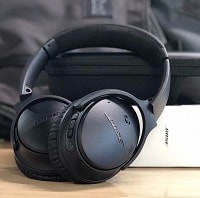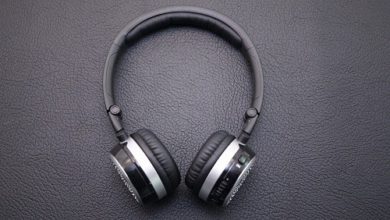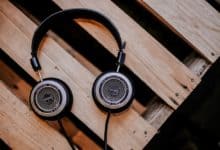Everything You Need To Know about Noise cancellation Headphones
 We’ve come across so many instances in life when we wish we could just plug out the sounds around us. Early in the morning to your neighbor mowing their lawn, the sound of a baby crying in an airplane, the annoyance of that one loud talker in public transportation.
We’ve come across so many instances in life when we wish we could just plug out the sounds around us. Early in the morning to your neighbor mowing their lawn, the sound of a baby crying in an airplane, the annoyance of that one loud talker in public transportation.
And of course, the gods of technology have come to hear our prayers by introducing to us the beautiful phenomenon of noise-canceling earphones and noise-canceling headphones.
We can’t begin to tell you how magical the simple act of noise-canceling is.
Imagine not having to hear anything besides your favorite song jamming into your ears. Or even better, getting a good nap while you commute to work or take a long flight!
The noise cancelation could be broken down into distinct types:
- Active Noise Cancelation
- Passive Noise cancelation
- Adaptive Noise Cancelation
While all three follow the main and common purpose of noise cancellation, they do so in very distinct and different routes.
Active Noise Cancellation
 This is the most used way of canceling noise. Obviously there exists a massive and honestly quite boring amount of detailed and technical science behind it. So, here’s the not so detailed and fun version of quite an interesting concept:
This is the most used way of canceling noise. Obviously there exists a massive and honestly quite boring amount of detailed and technical science behind it. So, here’s the not so detailed and fun version of quite an interesting concept:
The keyword of this form of noise control is “active” which indicates that there is a constant input that makes it an engaging or “active” process. In this form of technology, your headphones and earphones do not just block out the sounds around you. Instead, they listen to the sounds around you using your microphone on the headset that you have on and then create a sound wave of its own that effectively and efficiently cancels out all the existing sounds.
But we need to keep in mind that it can’t pick up on irregular sounds. So, noise is canceled using a constant and steady set of frequencies which could be anything from the hum of the airplane engine, factory machinery, and even air conditioning.
So, the microphone picks up a steady frequency and then creates a reverse frequency for the same. This reverse frequency works as the same amplitude of the noise frequency but with an inverted phase, thus becoming an interference.
However, sounds that aren’t constant like a random honk, a sudden loud laugh or voice you’ll most likely be able to hear them. This creates a distinct difference between sound-proofing and noise canceling.
Depending on how loud and consistent your environment is, noise-canceling earphones can minimize sounds such that you hear nothing at all.
Adaptive Noise Cancellation
 As compared to active noise control, it’s a comparatively new term and honestly quite similar to it as well.
As compared to active noise control, it’s a comparatively new term and honestly quite similar to it as well.
Just like noise cancellation, adaptive noise cancellation also uses the negative sound wave phenomenon to cancel out noise in the listener’s environment. However, the difference exists wherein it uses algorithms to detect the surrounding noises and produces an almost perfect inverted sound wave that best suits the noise in your environment.
Multiple companies that engage in the creation of ANC headphones create their earpieces such that they adjust and better suit the users ears and covers up for a majority of “leakages” like those caused by glasses, shape of an individual’s ears as well as the natural movement of someone’s head as they go about their tasks.
Passive Noise Cancellation
These are what could be considered as effective hearing seals on your ears. Noise cancellation is entirely based on less technical aspects but on how well the earpieces can create a vacuumed space in your ears or seal up your ears with their earbuds.
It works on the physical attributes of a headset that has extra material like a foam to cancel out sounds from outside without actually creating a sound wave themselves. It does just about the same thing as plugging your ears with earplugs when you go swimming to effectively keep water out. Or putting your fingers into your ears to avoid listening to somebody.
What’s the outcome you ask? While it does indeed reduce the sounds and noises from your external environment, it can’t entirely get rid of sounds thus making it more of a noise reducer than a noise canceler. Moreover, these headsets tend to be more painful to wear for long periods of time as the ears can only bear being plugged for so long.
What noise cancellation is best for you?
 There is no ultimate answer for this, and you can obviously indulge in whichever form of noise control and cancellation you want to. Well, that’s as long as you have the money to spend on this of course.
There is no ultimate answer for this, and you can obviously indulge in whichever form of noise control and cancellation you want to. Well, that’s as long as you have the money to spend on this of course.
So, for example, you’re a manager and make a lot of conference calls on the move or tend to spend a lot of your time traveling in particularly noisy modes of transportation or even are a factory worker, you can opt for an active noise cancellation that genuinely makes you have a more peaceful day, especially when you don’t have to spend a majority of your day hearing a drill go at it with the concrete or the annoying chit chat of your colleagues at your workspace.
If you’re a commoner and don’t necessarily need the constant active cancellation, you can just choose the good passive noise cancellation headsets. These make good for traveling in public spaces, helping you concentrate just a little bit more on that book you’re reading or drown out the sounds at the cafeteria while giving you the oompf of your favorite songs.
If you work at spaces that have confusing levels of sounds, you can choose to invest in an adaptive noise-canceling headset. This will help in effectively getting rid of the constant changes in noise type and structure by creating inverted sounds that better suit your changing environment.
Do you necessarily have to invest in noise cancellation?
Well, truthfully, no. You can just enjoy music without any noise cancellation, but your lifestyle plays a huge part in whether a normal set of headphones or earphones can give you the same music or sound experience that noise cancellation can. Here’s a list of pros and cons that can help you in making a smart decision when you invest in a good headset for yourself.
Pros
High Music is a no-no: When you plug your ears in with noise-canceling headsets, you don’t have to play music loud because the earpieces effectively lower the volume of your surroundings. Thus, you can play music at a moderate volume and still be able to hear with immense amounts of crispness.
Effective and efficient sound experience: Noise-canceling earphones allow you to be able to hear better which immediately means that you can hear a conversation better or enjoy the intricate details of a particular song that you would normally find difficult.
Ideal for traveling and studying: do we even need to explain this?
Cons
Money: Though the constant technological advancements and competition are slowly bringing down prices, the bottom line is that these headsets are more detailed and have a ton more features that are not normally found in headsets. And so, to gain more, you have to give more.
Weight and high-power usage: Because these headphones carry a more intricate set of features, they tend to become heavier than your normal headphones. They also tend to use a lot more power to run and give you the experience that they promise. High power means shortened listening time or worse, you skim through batteries like changing clothes.
Quality of sound: While promising a quieter hearing experience, noise-canceling earphones can actually backfire and bring down the quality of the actual sound you intend on listening to. This is mostly because these headsets pay more attention to reducing the noise around you that they underperform in delivering the sounds you want to listen to.
We hope that you are more informed about the options available to you and that you choose very wisely when you consciously invest in your headsets. Remember that this decision needs to be made while keeping in mind the types of noise cancellation, your lifestyle choices and the amount of money you are willing to spend on your hearing gadgets.






